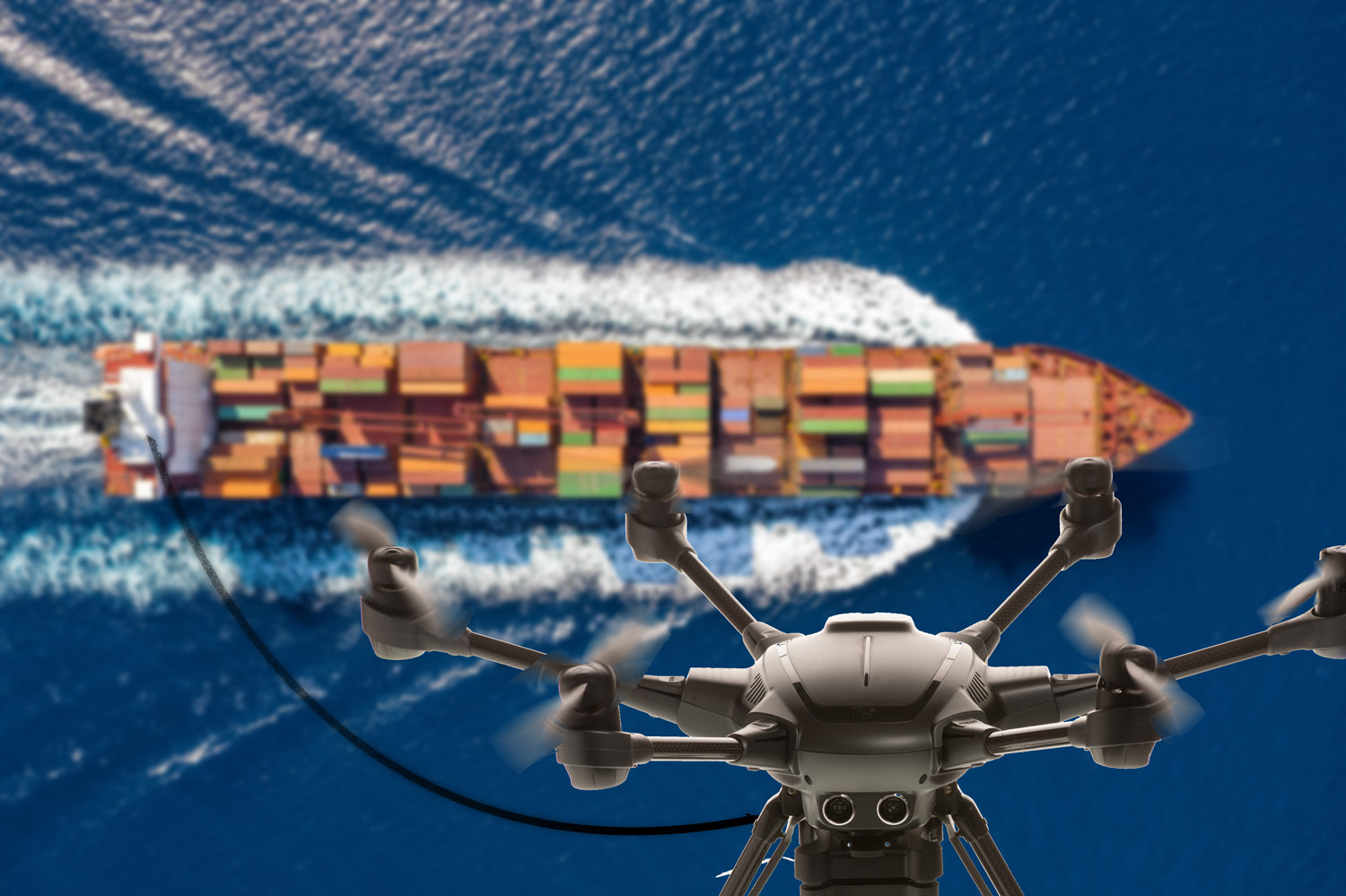In April at a DISA event in Baltimore we joined the crowds gathered around the AT&T booth with a big 16-rotor drone suspended from the ceiling. In addition to being eye-catching, they had a cool story. The tethered drone provided the equivalent of a cell tower for an area that had lost infrastructure to a storm or other natural hazard.
With power and fiber optic communications sent between the tether and an ATV-mounted base station the drone could hover long-term and in a variety of weather conditions. The tether can be extended to 550-feet, giving the drone a coverage area larger than most permanent towers and many times the size of a temporary tower.
Dragonfly Pictures Inc. (DPI) is developing similar technology with an eye on maritime communications. Tethered up to 150 m above a vessel or really any floating structure, the drone acts as an antenna for line-of-sight communications or as a piece of a maritime LTE or 3G/4G system. At 150 m above a vessel, the drone would have a line-of-sight range of 32-40 km, depending on environmental conditions.
“Because it is tethered, the drone receives power from the vessel and can remain up for weeks at a time, except in gale-force winds,” says DPI president Michael Piasecki. “It can be brought down, recovered and then relaunched quickly and will automatically follow the host ship.”
Applications include offshore oil & gas and renewables operations where a drone could be tethered at even greater heights for longer distance communications. The stations could also be daisy-chained for long distance communications. Sensors could be added to aid visual awareness with day and night cameras and radar.
In the maritime and oil & gas industries Uplogix often uses an Iridium satellite connection as an out-of-band link. If cellular communications networks expanded due to use of tethered drones, some of our customers could likely migrate to potentially cheaper & higher speed cellular modems.





